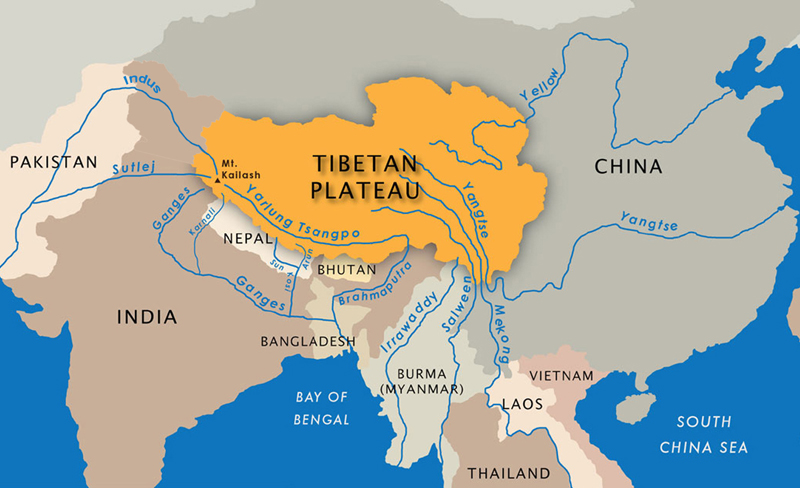(TibetanReview.net, Aug16’24) – Tibet Autonomous Region (TAR), the western half of Tibet proper which China calls Xizang (or Xizang Autonomous Region), is home to 41% of China’s total glaciers, 16.5% of its water resources, 30% of its grasslands, 18.3% of its wetlands and 40% of its lake area, reported China’s official Xinhua news agency Aug 16.
These percentages will rise enormously if the other historically Tibetan areas that are under Chinese rule are also taken into consideration, especially Qinghai, made up of the bulk of Tibet’s historical Amdo (or Domey) province and a section of Kham (or Dotoe) province.
The report gave these details in the context of the coming into force on Oct 1, 2024, of a regulation on the protection of the glaciers in the region, citing a press release issued by the Standing Committee of the People’s Congress of TAR on Aug 15.

The report noted that the regulation came after China’s law on ecological conservation on the Tibetan Plateau was enacted in Sep 2023, the first state-level legislation specialized in regulating ecological conservation on the plateau.
The regulation is stated to provide specific guidelines for governments and relevant departments in glacier areas, introduce a responsibility system and performance evaluation mechanism for glacier protection goals, and establish punitive measures for violations.
The regulation will effectively protect glacier resources, ensure the ecological safety of the Tibetan Plateau, and contribute to the preservation of the plateau’s flora, fauna and landscapes, Zhao Guiying, deputy director of the Legislative Affairs Commission of the Standing Committee of the People’s Congress of the TAR has said.


